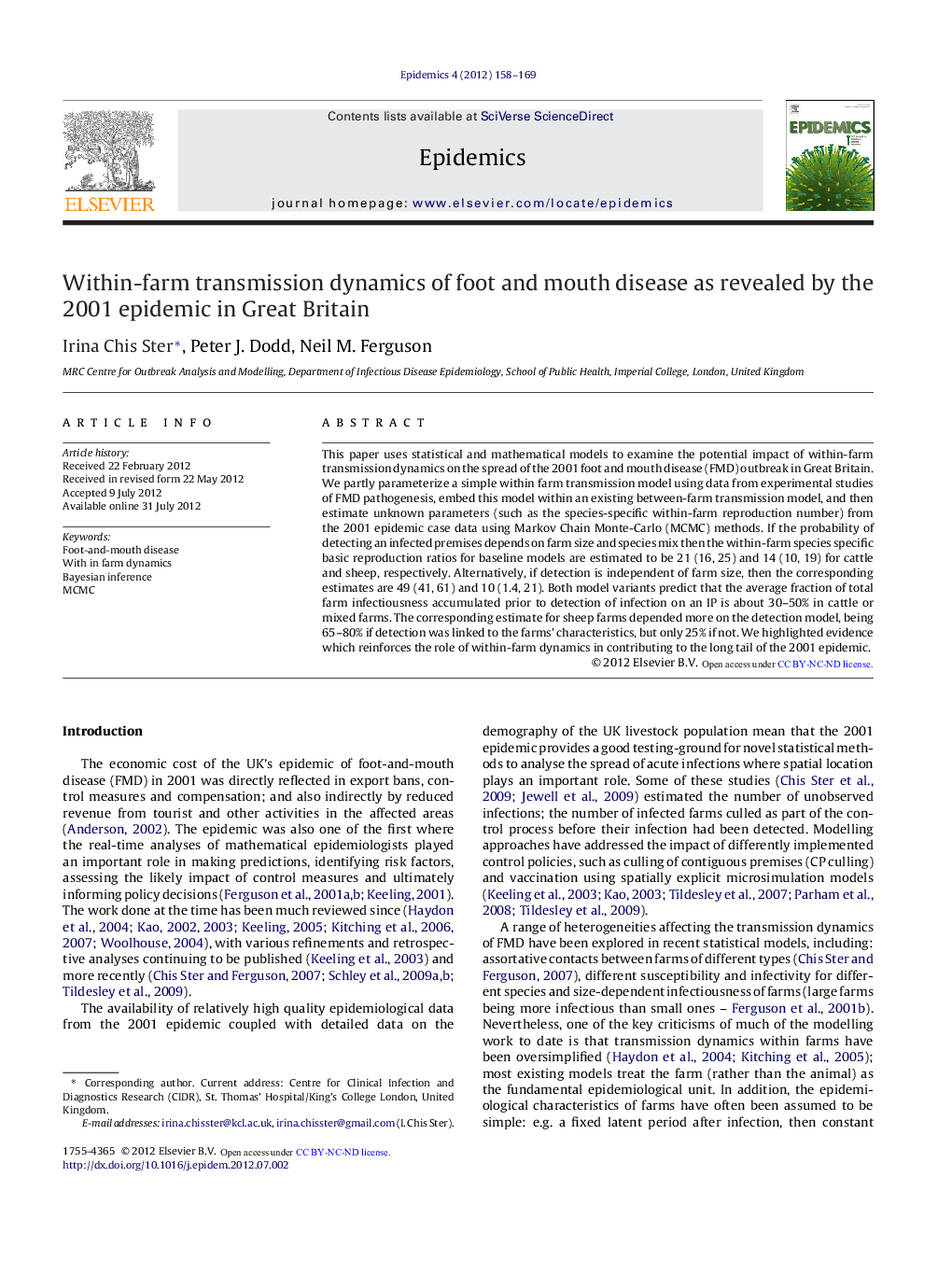| کد مقاله | کد نشریه | سال انتشار | مقاله انگلیسی | نسخه تمام متن |
|---|---|---|---|---|
| 5904785 | 1159079 | 2012 | 12 صفحه PDF | دانلود رایگان |

This paper uses statistical and mathematical models to examine the potential impact of within-farm transmission dynamics on the spread of the 2001 foot and mouth disease (FMD) outbreak in Great Britain. We partly parameterize a simple within farm transmission model using data from experimental studies of FMD pathogenesis, embed this model within an existing between-farm transmission model, and then estimate unknown parameters (such as the species-specific within-farm reproduction number) from the 2001 epidemic case data using Markov Chain Monte-Carlo (MCMC) methods. If the probability of detecting an infected premises depends on farm size and species mix then the within-farm species specific basic reproduction ratios for baseline models are estimated to be 21 (16, 25) and 14 (10, 19) for cattle and sheep, respectively. Alternatively, if detection is independent of farm size, then the corresponding estimates are 49 (41, 61) and 10 (1.4, 21). Both model variants predict that the average fraction of total farm infectiousness accumulated prior to detection of infection on an IP is about 30-50% in cattle or mixed farms. The corresponding estimate for sheep farms depended more on the detection model, being 65-80% if detection was linked to the farms' characteristics, but only 25% if not. We highlighted evidence which reinforces the role of within-farm dynamics in contributing to the long tail of the 2001 epidemic.
⺠This paper investigates the foot and mouth within-farm transmission dynamics. ⺠A within farm transmission model is parameterized using experimental data. ⺠The cattle and sheep within-farm reproduction numbers are 21 (16, 25) and 14 (10, 19). ⺠That is if the probability of detection of a case depends on farm characteristics. ⺠Alternatively, the estimates are 49 (41, 61) for cattle and 10 (1.4, 21) for sheep.
Journal: Epidemics - Volume 4, Issue 3, August 2012, Pages 158-169